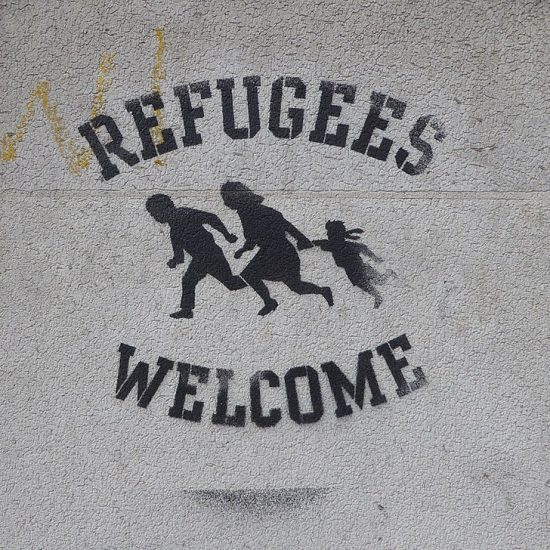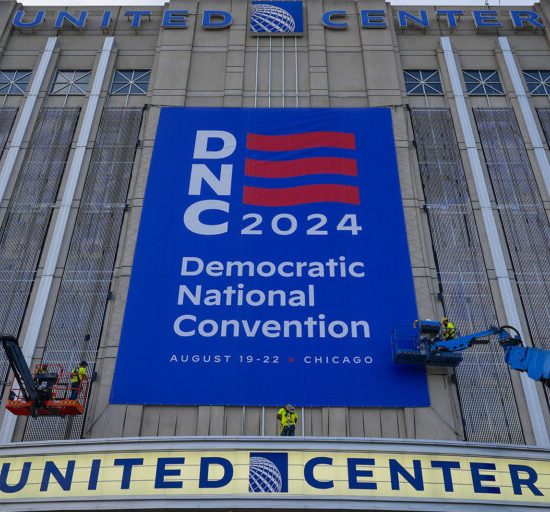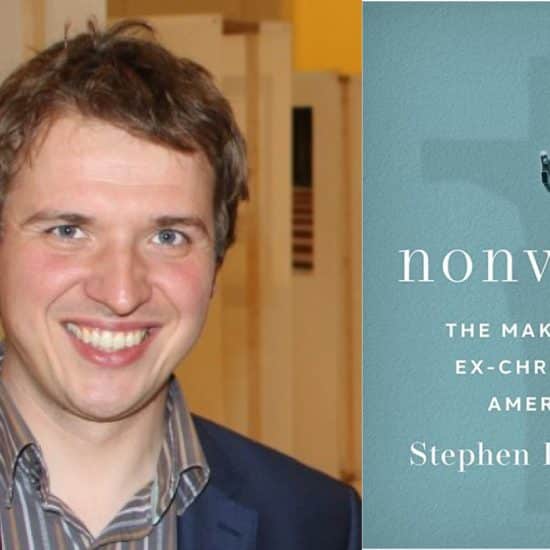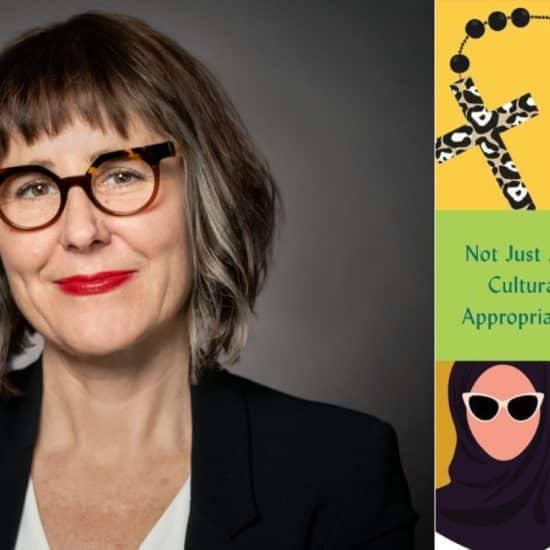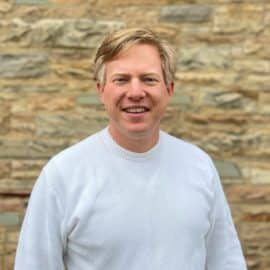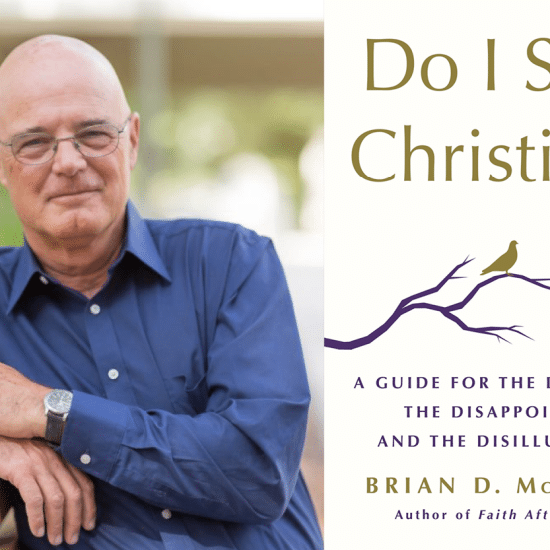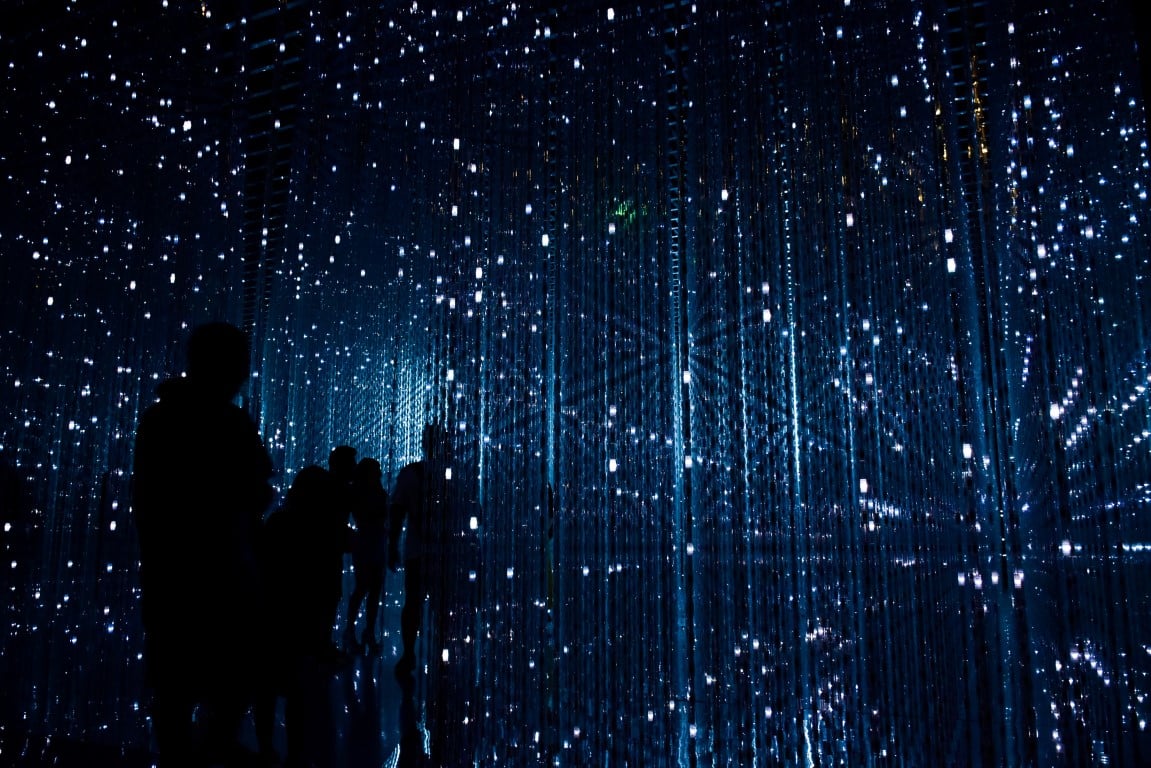
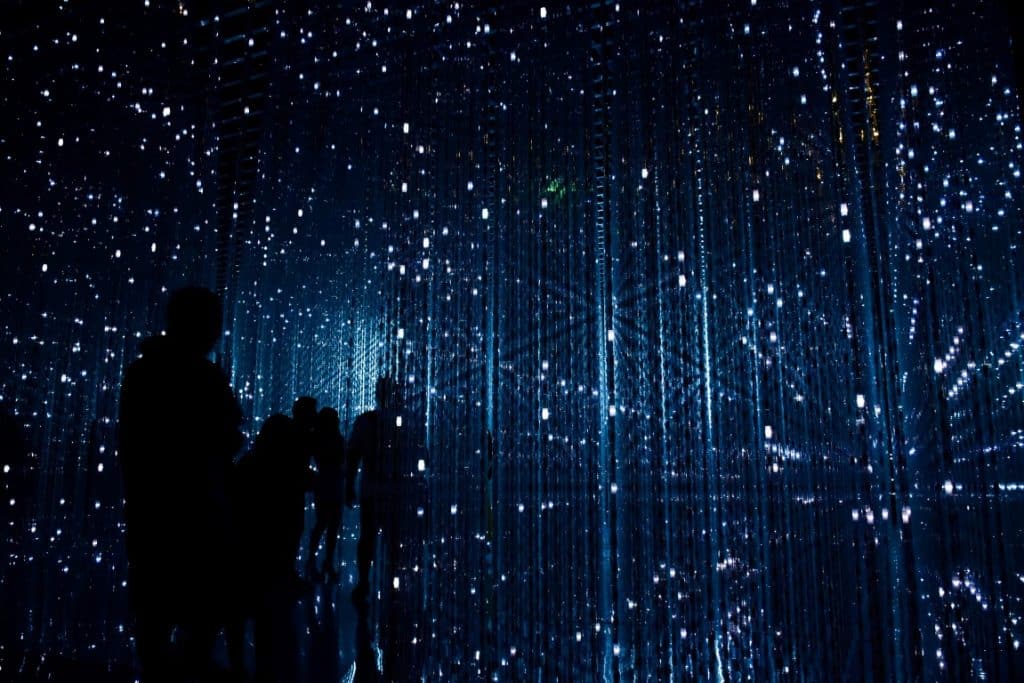
Photo by Robynne H on Unsplash
(RNS) — The past 10 years have witnessed monumental demographic shifts in the U.S., catastrophic natural disasters and new urgency on climate change, a reckoning on sex abuse among religious groups from the Catholic Church to the Shambhala Buddhist community.
This decade has seen the reelection of the country’s first black president and the election of the first president to call for an outright ban on Muslims entering the country. It has been marked by world-shaking movements such as the Arab Spring, Occupy Wall Street, Black Lives Matter and #MeToo; migrant crises at the United States’ Southern border as well as in Africa and Asia; the rise of bots and social media disinformation campaigns; the legalization of same-sex marriage, matched by a revolution in the way Americans think about gender and sexuality; the death of Osama bin Laden and the rise and fall of the Islamic State group; terrorist attacks, school shootings and violent attacks upon houses of worship; movement on the legalization of marijuana; the beginning of the Syrian civil war; controversial hearings on American Muslim radicalization and the launch of federal Countering Violent Extremism programs; and new attention to mental health, among countless other trends, movements and headlines.
What will the next decade hold?
We asked scholars, faith leaders, activists and other experts to reflect on some of the biggest shifts in religious landscapes they have seen over the last 10 years — as well as the biggest themes in the world of religion that they expect to emerge in the 2020s.
The views expressed in these submissions, which have been edited lightly for length and clarity, do not necessarily reflect those of Religion News Service. Find 2018’s predictions here and 2019’s predictions here.
Khyati Joshi: A Reckoning for Religious Minorities in the US and India
The past decade has seen America’s immigrant religious minority communities emerge with effective and forceful self-advocacy. Hindu temples, mosques and other houses of worship are suing for the right to build, rather than avoiding conflict and settling for inferior locations as many previously did. Sikh Americans have fought for the opportunity to serve in the military, police and Secret Service while observing their faith’s tenets. These groups are staking their claim to physical and rhetorical space in the public square.
Simultaneously, segments of white Christian America fear that the nation is losing its identity. This fear has resulted in vocal and violent religious discrimination, the Muslim ban, state-mandated teaching of the Bible in public schools and laws barring teachers from penalizing students who give faith-based answers in science class.
I’m keeping an eye on these growing bonds of nationalism and religion in America, as well as in India. In both large, officially secular democracies, a rising tide of thought and official action links national identity with the majority religion. Notions of “real” Americanness weave together whiteness and Christianity, while Indian national identity and policy grow increasingly Hindu. India has seen Hindu communities policing minorities’ diets; the Supreme Court resolution in favor of Hindus in the Ayodhya territorial dispute between a mosque and a Hindu temple; and the Citizenship Amendment Act, which singles out Muslims for less favorable treatment as immigrants and refugees.
Both nations approach a crisis point. In India, rising protests and the government’s violent response will spark a reckoning about how the nation treats its minorities. And next year, Americans will either reelect a president who plays to the shrinking white Christian majority’s basest xenophobic instincts, or a diverse coalition will elect a candidate whose vision of a “more perfect union” embraces religious difference.
Joshi is a professor at Fairleigh Dickinson University and author of “New Roots in America’s Sacred Ground: Religion, Race and Ethnicity in Indian America.” Her new book, “White Christian Privilege,” will be published in 2020.
Luke Goodrich: SCOTUS Will Rule During an Era of Unprecedented Religious Freedom Conflicts
One major shift in the past decade is that traditional Christian beliefs about abortion and marriage are increasingly viewed by some parts of society as a threat to modern culture. The result has been significant, unprecedented religious freedom conflicts involving traditional Christian views. Examples include the over 100 federal lawsuits filed over the contraception mandate, culminating in the Hobby Lobby and Little Sisters of the Poor decisions by the Supreme Court; and the increasingly common litigation over conscientious objections to same-sex marriage by religious wedding vendors, schools, counselors and adoption agencies.
In the next decade, expect the Supreme Court to issue multiple, significant decisions on religious freedom. In the context of abortion, expect the court to affirm the long-settled principle that no person can be forced to participate in an abortion in violation of his or her religious beliefs. And in the context of same-sex marriage, expect the court to make good on its promise in Obergefell, its landmark decision affirming same-sex marriage, that “religions, and those who adhere to religious doctrines, may continue to advocate with utmost, sincere conviction that, by divine precepts, same-sex marriage should not be condoned.” In other words, the court will recognize that our country is deeply divided on matters of religion and sexuality. And it will hold that the government doesn’t get to pick one side of that divide and punish everyone who disagrees, but must instead protect the equality and dignity of both sides of the debate.
Goodrich is an attorney at the Becket Fund for Religious Liberty. His book, “Free to Believe: The Battle Over Religious Liberty in America,” was published in October.
Wardah Khalid: Muslim Political Engagement Will Reach New Heights
Ten years ago, I started a blog called “Young American Muslim” in response to the Islamophobia I witnessed around President Barack Obama’s election and began speaking about the dangerous consequences of the Islamophobia network. At the time, Muslims were constantly being put on the defensive. As Americans asked “Where are the moderate Muslims? Why don’t Muslims condemn terror?,” many of us felt education could help solve the problem.
Today, as hate crimes against the community have reached their highest levels since 9/11, exacerbated by bigoted rhetoric in the media and the nation’s highest political offices, Muslims have moved beyond that. They are now joining the media and policymaking process themselves to define their own narrative.
America’s estimated 3.8 million to 8 million Muslims will continue to build political power, motivated by Islamic values such as peace and justice. We will see voter registration and engagement with elected officials rise alongside more Muslims running for office, working on Capitol Hill and organizing at the grassroots level around domestic and international issues. At the national level, we’ll see deliverables such as presidential policy platforms (for the first time?) and improved coordination between Muslim civic engagement organizations. And while I’m afraid Islamophobia during the 2020 presidential election will still emerge, I’m hopeful that it will be met by swift condemnation and successful calls for accountability by our interfaith allies, politicians and the media.
Khalid is the founding president of the Poligon Education Fund and a congressional fellow with the Asian Pacific American Institute for Congressional Studies.
Ryan Burge: Interested in the Rise of the Nones? Keep an Eye on the Year 2029
I wanted to predict what American religion would look like in 2030 by extending the current trend lines of the seven major religious traditions in the United States. More specifically, I was interested in how long it would take for the religiously unaffiliated, who have seen major gains over the past decade, to be clearly the largest group in the United States. The answer that was derived from my projection model is 2029.
This is the point when the model says that if the so-called nones grow at the slowest rate, they will still be larger than any other group, regardless of the margin of error. At the same time, the two other large religious groups in the United States (evangelicals and Catholics) will each make up about 22% of the U.S. population. The only religious tradition that will sustain serious losses is mainline Protestants. These are the moderate forms of American Protestantism typified by United Methodists and Episcopalians. Today, they make up about 10% of Americans, but in 2030 that will be cut to just under 5%. That result is stunning considering that this group made up 30% of the population in 1976.
At the same time, it’s noteworthy that for black Protestants, Jews and those of other faith traditions (Mormons, Buddhists, Muslims, Hindus) the next decade will likely be one of stability and consistency. Obviously, projecting religious demography into the future is a difficult proposition and a number of factors could make these predictions look very silly, including national tragedies or spiritual revival. However, it’s undeniable that American culture and politics will slowly begin to change as the nones continue to rise. Read more about the assumptions built into this projection model and some of its results in a blog post I wrote for Religion in Public.
Burge is an assistant professor of political science at Eastern Illinois University, where he researches the intersection between religiosity and political behavior in the U.S.
Roy Speckhardt: A Future of Religious Neutralism
The number of people who are humanist is on the rise and young people who left religion are already leaning toward not returning, which shows a trend of what is to come. But this need not be viewed by many of the faithful as something to fear, for it will usher in an establishment of religiously neutral secularism that will drive respect for people of all faiths and philosophies.
Unfortunately, the interim may be difficult. As the United States becomes more diverse on religious questions, religious nationalists who do not share this sentiment of mutual respect and pluralism will feel like they are losing a battle of cultural dominance. Their current hold of our government makes them a major obstacle to a respectful world, and they won’t let go easily as our trajectory takes us further away from their unyielding and backward views. Instead, such religious supremacists will take defensive action to desperately hang onto power, not only to sustain their bigotry but try to make it the law of the land.
This means there’s still plenty of work ahead of us to welcome a respectful world for all — humanists and progressive religious communities will need to come together to make this a reality.
Speckhardt is executive director of the American Humanist Association.
Robert P. Jones: A Post-White Christian America Hits the Polls
The 2010s witnessed two remarkable trends that have transformed America’s religious landscape.
First, the U.S. crossed a major demographic milestone, moving from being a majority white Christian nation to one without any religious and racial majority. At the start of the decade, 53% of Americans identified as white and Christian; by 2014, that proportion was 47%, and today it has reached 42%. Second, attitudes about LGBTQ relationships and rights have shifted dramatically. In 2010, 48% of Americans supported allowing same-sex marriages, and most major religious groups were divided on the issue. By 2019, support for same-sex marriage among the general public had jumped to 66%, with solid majorities among non-Christian religious Americans such as Jews, Hindus, Buddhists and Muslims (80%), white mainline Protestants (74%) and Catholics (72%). Today, white evangelical Protestants are the only major religious group with a strong majority (71%) opposing same-sex marriage.
If the 2010s was the decade of transformation, the 2020s will be the decade of reckoning with change. Because white Christians vote at higher rates than other Americans, the ripple effects of these tectonic changes in the general population haven’t yet reached the ballot box. While 2008 was the last presidential election year when white Christians were still a majority among the general population, white Christians will likely remain the majority of voters in 2020. But in 2024, demographic waves will crash onto our political shores.
This new reality will impact partisan politics, particularly the calculus of future Republican presidential candidates. Currently, the GOP base is about 70% white and Christian. The more tightly President Donald Trump ties the party to this shrinking and graying base, the longer the road to victory will be in 2024 for the Republican nominee, who by necessity must create a broader, younger and more racially diverse coalition.
Jones is the CEO and founder of Public Religion Research Institute and the author of “The End of White Christian America.” His forthcoming book is “White Too Long: The Legacy of White Supremacy in American Christianity.”
Simran Jeet Singh: Fighting Against the New Normal of Religious and Ethnic Nationalism
The Muslim ban. The executive order designation of Jews as a race in the United States. Bans on religious symbols in Canada and France. The Citizenship (Amendment) Act in India. Each of these represents the troubling trend of backlash against the freedom of religion in what are ostensibly democracies, driven by nationalist sentiment.
The phenomenon of religious nationalism and ethno-nationalism is not new — but it has increased steadily over the past decade and has boiled over all across the world. This is our new normal, and it has profound consequences for societies that have drawn their strength and prosperity from pluralism and diversity.
The next decade will determine which of the two paths we decide to traverse as a global society. Do we continue down the road of exclusivism, ethno-centrism and dehumanization? Or can we reverse this trend and move back toward our values of inclusivity, human rights and justice for all?
Many of us are so clear about which path we prefer that the answer seems unquestionably obvious. It feels easy to dismiss our current trend as a misguided anomaly that is easily correctable, or an ugly backlash that will fade on its own. If we have learned anything from the past decade, though, it must be that the nationalist forces are powerful and compelling enough to have taken a strong hold over our world. It will require significant intention, strategy and effort to overcome their momentum.
Singh writes the Articles of Faith column at RNS and hosts the new “Spirited” podcast. Based at New York University’s Center for Religion and Media, he is a senior religion fellow for the Sikh Coalition.
Rabbi Jeffrey Salkin: Jews Prepare for a New and Difficult Year
The Talmud says: “Ever since the destruction of the Temple, prophecy has been given into the hands of children and fools.” I am neither, but let me tell you what I see in the stars for world Jewry in the coming year. The picture is not pretty. This past year has seen the rapid acceleration of anti-Semitic incidents — both in Europe and in the United States. The social contract, complete with an immune system that guarded against the excesses of hate, has vanished.
No, this is not Berlin, 1938. And yet, it is disturbing and disorienting. European Jews are “accustomed” to this; it has been part of their narrative for the past thousand years. For American Jews, this is something for which nothing in their history or experience has prepared them. More disconcerting: With the exception of certain major cities, synagogue affiliation rates are dropping. Fewer young people are getting a quality Jewish education. With a shrinking sense of religious community — less communal Velcro — young Jews, and others, will be less prepared to meet the external challenges they will face.
But there is hope. Synagogues might be shrinking, but alternative kinds of communities and structures are growing. The number of Jewish startups, and the energy within them, is admirable. The Jewish arts are experiencing a new vitality. So, in 2020: There will be more hate. The election year will cause more of it to spew out of the body politic. Jews will need to figure out how to creatively face that challenge. It will not be easy, but my money is on the Jews.
Salkin writes the award-winning column Martini Judaism at RNS. He also serves as the senior rabbi of Temple Solel in Hollywood, Florida.
Luciano Joshua Gonzalez-Vega: A New Era for Latinx Leadership
In Hispanic, Latino, Latina and Latinx spaces, generational shifts in religious beliefs have caused a general undercurrent of tension that is palpable and ever-present in a variety of households. Once uniformly Catholic families are now theologically diverse, wherein younger members might be evangelical, Mormon or even non-Christian altogether, while many of their parents are still comfortably Catholic. In the past 10 years, in and out of Latin America, Latin American families have witnessed significant religious upheaval, and this is a truly historic moment in terms of religious diversity throughout Central and South America and for such families outside of Latin America.
In the next decade, as religious movements and humanistic groups alike begin to respond to new social conditions and environmental needs, Hispanic, Latino, Latina and Latinx theological and humanistic spaces will witness a new surge of activism and leadership from their Latin American members. Across theological lines, the next decade will bring with it a surge of Latin American leadership, leadership that takes into account material conditions faced by people in this life, and leadership that is inspired to work to change the world for the better.
Theologically, humanistically and socially, Latin American leadership will take on new and more comprehensive roles in major organizations, particularly in response to new challenges like the threat of climate change, and the renewed rise of authoritarianism throughout the world.
Gonzalez-Vega is the co-chair of the Latinx Humanist Alliance, a director of the Hispanic American Freethinkers and an administrator of the Secular Latino Alliance. He runs the Patheos blog Sin God.
Mark Silk: Religious Differences as National Identity
Worldwide, the most consequential religion story of the past decade was the election of the cardinal archbishop of Buenos Aires, Jorge Mario Bergoglio, as Pope Francis in 2013. Within the world’s largest religious organization, Francis has dramatically restored the liberalizing spirit of the Second Vatican Council, much to the consternation of Catholic traditionalists in the developed world. He has also become the world’s most important voice of conscience, emphasizing the plight of immigrants at a time of increased demographic dislocations and, perhaps most importantly, putting his moral authority behind the cause of combating climate change.
During the next decade, the overarching story will be the ideological importance of religion in the domestic politics of nation-states. This includes the harsh suppression of Muslim minorities in Myanmar and China, the Modi government’s effort to define India as a Hindu state and the embrace of Eastern Orthodoxy in Russia. In the U.S., partisan conflict over religious rights and values continues to intensify. Increasingly, differences over religion lie at the core of the politics of national identity.
Silk writes the Spiritual Politics column at RNS. He is a professor and the director of the Leonard E. Greenberg Center for the Study of Religion in Public Life at Trinity College.
The Rev. Laura Everett: Collective Leadership from Church Figures
Over the past decade, the ways people connect to religious life have changed further. Among the church in New England where I serve, pastors consider “regular” Sunday attendance to be two times a month. From podcasts and streaming worship to in-person attendance and membership, the practices of affiliation have shifted.
The continued exodus of many younger folks will force further changes. In many places, the church has been slow to respond. I’m intrigued by projects like the Chaplaincy Innovation Lab that seek to equip spiritual caregivers for this new religious landscape, and curious about what economic models exist. At the same time, the nature of our divisions in the church has changed. Despite all the differences in practice and polity, sometimes a conservative Methodist can identify more with a conservative Roman Catholic than a progressive Methodist. Rather than primarily denominational differences, I’m watching the division of the church break along the fault lines of issues of conscience and justice.
Religion will be front and center in the 2020 election cycle. For Christians, I fear that our faith will be further distorted and weaponized to condemn and divide. While I hear the desire in many parts of the church for a single prophetic voice to lead in the wilderness, I suspect collective leadership will continue to guide, as we’ve seen previously in movements like Occupy, Black Lives Matter, #MeToo and #ChurchToo, the Climate Crisis, the Poor People’s Campaign and the humanitarian response to the cruelty of the Trump administration’s Immigration and Customs Enforcement detentions. I think the 2020 census holds a unique opportunity for every religious community to affirm the dignity and worth of all people.
As much as the church feels unsteady, I’m clinging to the hope of God’s enduring provision, whatever may need to crumble and fall.
Everett is executive director of the Massachusetts Council of Churches. She is a chaplain to Boston cyclists and a mender.
The Rev. Tom Reese: Pope Francis Shifts Church Priorities
The election of Pope Francis and his impact on the Catholic Church is the most important news story for Catholics. He has refocused its pastoral priorities away from legalism to compassion and mercy. He has focused the public priorities of the church on refugees, the poor and global warming.
In the U.S., the sex abuse crisis in the Catholic Church has moved from protection of minors (which has been fairly successful) to holding bishops accountable for covering up abuse. The abuse crisis has also expanded to other faith traditions. For the country as a whole, the major shift has been the continuing growth of “nones” as a percentage of the population. Politically, the continued support of Trump by white evangelicals is critical. Internationally, the big stories have been the rise of Hindu nationalism in India, the rise and fall of ISIS, genocide against Rohingya in Myanmar and the persecution of Uighurs in China.
In the next decade, we will see more believers committed to protecting the planet and slowing global warming. More interreligious cooperation will take place at the same time that interreligious conflicts increase. Catholics will elect a new pope.
Reese, a Jesuit priest, is a senior analyst at RNS and writes its Signs of the Times column.
Dalia Mogahed: Religion Keeps Going Digital
Muslim young people are as likely as their elders to say religion is important, unlike their generational peers in the general public, but they are less likely to participate in communal prayer. Religion has resonance among young Muslims but has become hyper-individualized. Instead of going to a lecture at a mosque, young people join via Facebook Live. Instead of going to jumah prayers every Friday, people are engaging their faith through YouTube videos or lectures from their favorite speaker. This digitization to religious engagement both gives more access and risks fragmentation, polarization and the loss of shared understanding, experience and solidarity.
There is a related but distinct trend of the drift of practicing Muslims to both the left and to the right. This shows up as the paradigms and language of progressive social movements in the case of the left, and the alt-right in the case of the right. They are superimposed on religious narratives, rather than starting with God’s guidance to form moral positions.
Mogahed is director of research at the Institute for Social Policy and Understanding, where she leads the organization’s research and thought leadership programs on American Muslims.
Charles Camosy: In Defense of Human Dignity
In Roman Catholicism, lots of folks are going to speak about the election and pontificate of Pope Francis — and that, indeed, has been a major shift and event. But maybe even a bigger shift was the event that prompted his election: the 2013 resignation of Pope Benedict, the first time a pope has resigned by his own decision since 1294. It was the first shift in a major rethinking of the papacy itself, which Pope Francis continued — albeit in a different way.
Over the next decade, I think the major theme in Catholicism — and religions that focus on human dignity — will be to try to come to the defense of human dignity in relation to four major threats: artificial intelligence and robotics (including sex robots and robot soldiers), automated jobs (including truck driving and similar jobs), the rise of animal rights and meat alternatives, and human beings with end-stage dementia in an era of limited health care resources.
Camosy writes the Purple Catholicism column at RNS. He is an associate professor of theological and social ethics at Fordham University. His latest book is “Resisting Throwaway Culture.”
Arlene Sánchez-Walsh: Latinx Christian Communities Drift Away Toward Alternative Pastures
Predictions are tricky, but luckily I don’t expect that anyone other than religion nerds like myself will hold me to these! So with that caveat: I expect that Latinx “nones” and the drift toward the secular, unbelief, nonbelief and just plain not interested will continue to grow. The polls vary from 8% to nearly 20% or more, but what is clear is that religion becomes less important as the Latinx community comes into its first and second generation of growth in higher education and professional careers, and moves away from traditional family bonds. The drift away will continue — for Latinx Catholics and Protestants, but what about Latinx Muslims and Jews?
Latinx religious folks who may be looking for other religious pastures will continue to look at Islam, Buddhism and an array of other religious communities to call their own. The numbers of Latinx in non-Christian traditions is small, but in Islam, for example, Latinx are ready to move into their second generation. One of the trends to follow will be if Latinx Muslims will be willing to follow in the footsteps of their parents — or, like Latinx Christian communities, decide to drift away as well.
We cannot forget those communities who practice Santería, Espiritismo or varieties of religious practice that come in mixtures gleaned from the African, indigenous and Asian backgrounds that comprise Latinx people from the Americas. There have been Latinx Jews for centuries — some families just found that out this week! There are Latinx followers of Santa Muerte, Jesús Malverde and an array of saints (canonized and not) for decades. My prediction for these communities? Unlike organized institutional religions, those Latinx who practice popular religion will continue to grow, diversify and add to the stunning diversity of our communities.
Sánchez-Walsh is a professor of religious studies at Azusa Pacific University and the author of “Latino Pentecostal Identity: Evangelical Faith, Self, and Society.”
Rabbi Joshua Stanton: Rethinking Jewish Identity
Who is a Jew? In the next decade, progressive denominations may succeed in promoting a more inclusive definition, both in the United States and Israel. In the United States, a robust new study indicates that at least 12% to 15% of the American Jewish population are people of color. These American Jews have been underrepresented both in population studies and (far more importantly) in most communal institutions and places of leadership.
Major denominations and organizations are already working to ensure that all Jews feel at home and are treated as equal members of the Jewish people, and more will follow suit. You can expect stronger relationships, allyship and coalitions with communities of color, so that Jews of color can proudly embrace all of their identities. American Jewish denominations would do well to listen to Jewish millennials and members of Generation Z, who are coming of age in record numbers before our eyes. These rising generations require our willingness to see each person as a unique individual, rather than as part of a broader category or binary. The jury is out as to whether we will learn to do so.
In Israel, the ultra-Orthodox Rabbinate’s monopoly over marriage and life-cycle events may end, breaking its power to tell hundreds of thousands of people that they are not really Jews at all. More than two-thirds of Israelis want this change already. Eight hundred thousand Israelis now identify as Reform or Conservative Jews, and they are less and less likely to allow fundamentalists who dominate niche areas of government to tell them what to do. Prepare for a comeback by progressive Jewish movements in both countries, if we are able to listen to those who are chronically underserved and collaboratively create new opportunities for spiritual experience with them.
Stanton leads East End Temple in Manhattan. He is a senior fellow at the National Jewish Center for Learning and Leadership.
Patrick Horn: The Religious Left is Here to Stay
The proliferation of digital platforms has negatively impacted democratic society and representative government through the spread of misinformation, disinformation, hate speech targeting ethnic and religious minorities, and inflammatory rhetoric that incites violence and sows discord, confusion and chaos. Media addiction may also contribute to rising social alienation and the decline of religious affiliation, often written as the obituary for mainline Protestant Christianity. However, 53% of the religious nones believe in a higher power, if not the biblical God, and there is a complementary rise in “alternative spirituality” such as astrology, New Age beliefs, esotericism/occultism, and yoga or Eastern philosophies. There has also been widespread popularity for the transformational leadership of Pope Francis and a growing movement of interfaith peacemaking and collaboration for the common good.
The religious rhetoric and woo-woo of Democratic presidential candidates show that there is a definite “religious left” and new moral majority that is more concerned about environmental stewardship and migrants than pot smokers and gay sex. Their symbolic gestures and bold social agenda will strongly influence future headlines, legislation and business. “Alternative spirituality” and inclusive opportunities for social justice will increasingly be expressed through the interfaith movement and such groups as the United Religions Initiative, which is active in over 110 countries, has over 20 million participants and is expected to reach 100 million people soon. There is a coordinated effort among diverse religious groups to mitigate climate change impacts, especially through partnerships such as the Interfaith Rainforest Initiative. Church leaders and religious actors will also play key roles in witnessing the emergency and consoling a humanity traumatized and grief-stricken by catastrophic disasters, famine and violence due to the collapse of civilization and near-term extinction.
Horn serves on the Religion Communicators Council Board of Governors.

